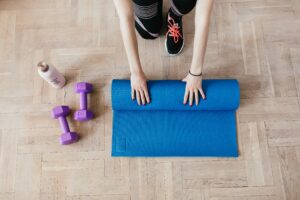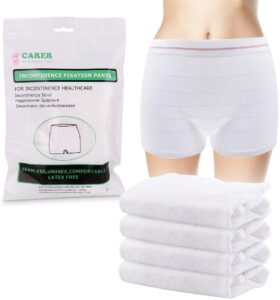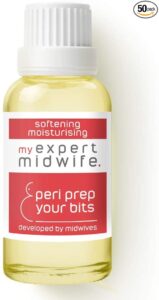A vaginal delivery is when the birth of the baby occurs through the birth canal and vagina and is the most common method of childbirth worldwide.
Symptoms associated with vaginal birth include:
-
Laxity of the vagina / feeling of a wider vagina
-
Vaginal dryness
-
Pain around the perineum / vagina
-
Discharge
-
Incontinence (faecal or urine). Please also see our page on incontinence for more treatment options.
-
Pain during bowel movement.
-
Bleeding.
-
Formation of scar tissue.
-
Fear of movement.
Here is what the evidence tells us about the treatment options for the aforementioned symptoms:
Wider vagina / vaginal laxity:
It is normal for a person’s vagina to feel wider than it did pre-birth. The stretched feeling, swelling and openness should reduce over the weeks following birth. Evidence suggests that this is still a common complaint amongst postnatal women.
Kegel exercises – evidence is good for the use of this type of exercise before and immediately after birth. Studies have shown that they can help with urinary incontinence as well as pain / recovery after birth. These exercises can be started as early as 1 day post birth. Here is a great video explaining how to do Kegel exercises.
Surgery – This is not recommended following childbirth.
Pilates – exercise is generally safe if you have had an uncomplicated vaginal birth (with no major tears). It is still recommended that you get the go ahead from your healthcare provider first however. Evidence strongly supports the use of Pilates-based exercise after pregnancy for the treatment of many conditions including pelvic floor strength. This study compared Pilates with standard pelvic floor exercises and concluded that the Pilates exercise program was as effective as conventional pelvic floor exercises in speeding up continence recovery.
Have a look at our Top 5 Online Pilates programmes here.
Vaginal Dryness:
In a large study it was found that 43% of women experienced a lack of vaginal lubrication post birth. this was often associated with breastfeeding and change in body image.
Vaginal dryness should resolve once breastfeeding stops and hormone levels return to their original levels. If symptoms don’t improve then speak to your healthcare provider.
HERE is what the NHS recommends for vaginal dryness.
Vaginal / perineal pain:
Pain can be from stretched or torn tissues, you may also have some stitches in the area.
Kegel exercises – There is a lot of evidence that supports the use of these exercises before and immediately after birth. The exercises have shown to help with pain, continence and speed of recovery. Here is a great video explaining how to do Kegel exercises.
Cold therapy – We know that cold can help to reduce pain and inflammation. Do not do this more than three times a day however, as this can reduce blood flow to the area and slow healing. You could use ice wrapped in a towel or you can buy specific cold packs for perineum pain like these that stick into your underwear and can be used at any time as they do not need to be frozen to activate the cooling effect.

Doughnut cushions – a lot of studies have been carried out in order to check the effects of doughnut cushions on pressure relief. The studies are always in their favour, so if pain is your main issue then something like this might help to take some of the pressure off the affected area. Various types of cushions are on the market, have a look at our Top 5 pressure relief cushions HERE.

Heat – warm baths have been recommended to encourage healing following child birth. Heat demonstrated therapeutic benefit for both analgesia and promoting healing. Wait until 24 hours after you have given birth to take a bath and make sure that the bathtub is cleaned with a disinfectant before every bath.

Sitz Bath – A Sitz bath is where one sits in water that covers your vulvar area a few times a day to help with pain and healing. It isn’t easy finding evidence for it’s effectiveness but it’s there if you dig deep enough. This older study compared cold and hot Sitz baths for relief of postpartum perineum pain and found that cold Sitz baths were significantly more effective in relieving perineal pain and can help with keeping the area clean. You can buy a collapsible Sitz bath with great reviews HERE.
Lavender – This very recent study showed that the use of Lavender (in any form), following the birth of a baby, had a significant effect on pain relief and healing of episiotomy wounds also. We would recommend using a lavender essential oil such as THIS one by Hebeso. This can be added to a bath for a heating effect also.
Position changes – While being active will help circulation and encourage healing, rest is also important during these early days of healing. A good position to rest in is lying down with your feet elevated above your heart to aid in circulation and reduce pressure to the perineum.
Vaginal discharge:
Lochia the name for the vaginal discharge you have after giving birth. It contains a mix of blood, mucus and uterine tissue. It is similar to menstrual period discharge and can last several weeks.
It might be worth investing in some disposable pants like THESE to cover you for the first few days / weeks post-birth. Bleeding / discharge tends to tail-off after this and is more easily managed with usual sanitary pads. It is not recommended that you use tampons at all at this stage due to the infection risk.
If heavy bleeding continues a few days after you give birth then speak to your healthcare provider.
If you have any of the following symptoms then tell your doctor right away or call 999:
-
Large blood clots continuing after 3 days.
-
Bleeding that soaks more than one sanitary pad an hour and doesn’t slow down or stop
-
Blurred vision
-
Fever / chills and clammy skin
-
Racing heart
-
Dizziness
-
Nausea
Perineal scar tissue formation:
Scar tissue formation is a normal part of the bodies healing process. Usually, once the injury is healed the scar tissue will gradually become more flexible and you will not notice that it is there. Sometimes the scar tissue can be a little thicker or stick to the layers below it and cause feelings of inflexibility and pain.
Perineal scar massage – We know from previous research that massage can really help with scar tissue in terms of pain, thickness, appearance and colour.
If you have had an episiotomy or a perineal tear, the scar tissue around the area can become tight and and less flexible. This may cause discomfort during intercourse and during physical activity. By massaging the perineal area you can reduce / mobilise the scar tissue. It is recommended that you wait until you have had your postnatal check, (usually at six weeks), to start this massage. Your healthcare provider will check that your stitches or scar have fully healed.
HERE is a great video explaining how you can help with your own scar tissue following episiotomy or tear in the perineal area.
Exercises – Here are some great exercises that you can start as early as 1 day after the birth of your baby. Staying active after birth can help with the healing process by increasing blood supply to the injured areas and allowing the scar tissue to form in a ‘mobile’ way.
Check out this video by Today Parent (speak to your midwife about these on your first follow-up appointment).
What the evidence says about preventing perineum tears / need for episiotomy:
Prenatal Perineal massage – A lot of ladies are told about perineal massage but does it actually help? Research suggests that it certainly does. THIS study is a little old but was on a large scale and produced some pretty reliable results. They found that perineal massage, undertaken by the woman or her partner (for as little as once or twice a week from 35 weeks), reduced the likelihood of perineal trauma (mainly episiotomies) and ongoing perineal pain.
We really like THIS step by step guide by NCT on how to do perineal massage. You can buy specific oil for perineal massage here.
Pelvic Floor Exercises – THIS study found that a training programme composed of pelvic floor exercises and perineal massage, helped to prevent episiotomies and tears in first time mums. Have a look at this video for a great explanation on when and how to do your pelvic floor exercises.
Yoga – There is strong evidence to say that yoga can help prevent injury during birth and there are lots of Online Yoga programmes available, have a look at our Top 5 here (and why we love them)! You can also read our blog on how yoga can help in other ways.

Pilates – Evidence has shown that Pilates can also have a positive effect on the birth and the outcome following the birth. This study compared Pilates with standard pelvic floor exercises and concluded that the Pilates exercise program was as effective as conventional pelvic floor exercises. Have a look at our Top 5 Online Pilates programmes here.

Water – Evidence is mixed when it comes to water births (or labour in water). It appears as though the water is helpful in pain relief but doesn’t necessarily help to prevent tears or the need for interventions such as episiotomies.
Symptoms to watch for following your birth:
-
Red / swollen skin around the vagina that looks ‘angry’.
-
Persistent pain that isn’t easing.
-
A smell that isn’t usual for you and quite noticeable.
-
Pus or liquid coming from the cut.
Tell your GP, midwife or health visitor as soon as you can about any possible signs of infection, so they can make sure you get treatment.




